Search results for: Segmentation, Targeting
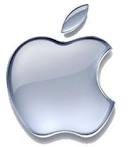
Apple marketing strategy is based on the founder Steve Jobs’s philosophy that customers do not always know what they want. Accordingly, instead of conducting marketing researches to identify customer needs and wants, the multinational technology company prefers to install innovative features and capabilities in their products, making customers to want Apple products. Under the leadership of Tim Cook since 2011 certain aspects of the business such as management style and company’s stance towards CSR have changed. However, the dismissal of marketing research remains to this day. Apple marketing strategy expresses the brand in minimalist, yet highly efficient ways. The world’s largest IT company by revenue is one of the first companies to successfully associate the brand image with being innovative, rebellious and non-conformist. Apple 7Ps of marketing is marked with a particular focus on the product element of the marketing mix and the company’s segmentation targeting and positioning initiatives are aimed at targeting users of premium products. Moreover, marketing communication mix of Apple Inc. places greater emphasis on print and media advertising and personal selling in Apple Stores and the company rarely uses sales promotions as part of its marketing strategy. Generally, Apple marketing strategy integrates the following: 1. Focusing on attractive value proposition. Apple’s value proposition is “beautiful design that works right out of the box with ever-smaller packaging”[1] The world’s largest IT company by revenue has been able to avoid price wars with competitors by emphasizing its unique value proposition in its marketing communication messages. Apple is a unique company in a way that it is a design firm, a media platform, a publishing company, a software powerhouse and a computer manufacturer – all at the same time. Such a position allows the company to communicate its value proposition to target customer segment in a cost-effective manner.…
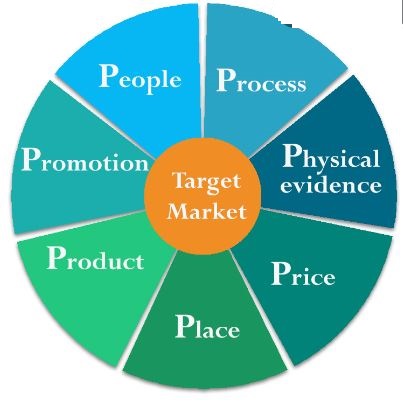
Marketing mix, also known as 7Ps of marketing includes individual marketing elements that form overall offer to customers. The concept was developed by marketing professor E. Jerome McCarthy and originally published in his book Basic Marketing. A Managerial Approach in 1960.[1] Initially the concept consisted of 4 Ps – product, place, price and promotion. As the field of marketing became more sophisticated additional 3 Ps – people, process and physical evidence were added by Bitner and Booms[2]. The additional 3Ps are also called ‘service mix Ps’, because they integrate important aspects of services into the marketing mix concept. Furthermore, in 2007 Larry Londre introduced another 2Ps – Partners/Strategic Alliances and Presentation. However, this latest addition has not been widely accepted among marketing researchers and practitioners, thus here we will stick to 7Ps of marketing. Marketing mix is a useful tool to tailor your products and services to the needs and wants of the target customer segment, but it is not a one-stop-shop for developing a comprehensive marketing strategy. A successful marketing strategy needs to address a range of other frameworks such as segmentation targeting and positioning, marketing communication mix and others. Product Element in 7Ps of Marketing Product or a service is the starting point in the marketing mix. Companies need to take into account the following variables, among others when developing new products: In what type of packaging is the product offered? Are products offered in various colours sizes etc.? What design and technical features differentiate the product in the competition? Are products durable and robust enough to appeal to the needs and wants of the target customer segment? What are the levels of quality and functional performance? Can he product be customized to individual users? Is the product easy to use and maintain? Is the product upgraded regularly? Place…

Starbucks marketing strategy is based on the following principles: 1. Focus on product and place elements of the marketing mix. Marketing mix comprises 7 elements – product, place, price, promotion, process, people and physical evidence. Businesses choose to concentrate on one or two elements as their sources of competitive advantage according to their business strategy. Accordingly, Starbucks marketing mix focuses on product element through offering foods and beverages of high quality and providing respective level of service. Place element of the marketing mix represents an additional source of Starbucks competitive advantage in a way that stores are usually located at high-traffic, high-visibility locations. 2. Customer segmentation and targeting premium customer segment. The world’s largest coffee retailer targets males and females from middle and upper class who can afford expensive prices of Starbuck products for regular consumption. The company uses mono-segment, adaptive and standby product positioning techniques in order to appeal to the needs and wants of the target customer segment. 3. Integrated application of multiple marketing communication channels. Starbucks marketing communications mix utilises a number of marketing communications channels such as print and media advertising, sales promotions, events and experiences, public relations and direct marketing in an integrated manner to communicate the marketing message to the target customer segment. 4. Consistent increase of the marketing budget to implement the above measures and initiatives. Starbucks has been consistently increasing its marketing budget for a number of years. Starbucks marketing expenses totalled USD305.1 million, USD258.8 million and USD245.7 million in fiscal 2021, 2020 and 2019, respectively. The Seattle-based coffee chain spends this budget to communicate its marketing message to the target customer segment in creative ways. 5. Extensive use of celebrity endorsements. Efficient use of celebrity endorsement is one of the cornerstones of Starbucks marketing strategy. The world’s largest coffeehouse chain…

IKEA marketing strategy is based on sophisticated customer research and market research. “IKEA actually sends design experts into people’s homes to listen to their concerns and provide feedback. This allows IKEA evangelists to make marketing decisions based on people’s real-life experiences rather than just surveys or data.”[1] Accordingly, it can be argued that marketing strategy of IKEA is proactive, rather than reactive. In 2018, the world’s largest furniture retailer shifted its marketing focus from rooms to product innovation. The ‘magic’ blue bag has been placed at the core of marketing strategy of IKEA and the latest ads have been designed to illustrate how the addition of just a few innovative items can transform the home for the better. Generally, IKEA marketing strategy integrates the following: 1. Focusing on product and price elements of the marketing mix. Specifically, IKEA attempts to offer the greatest range of products for the lowest cost. Economies of scale play an instrumental role in achieving competitive prices. The Swedish furniture chain offers mixed-and-matchedproducts accommodating unique style and needs of each customer. Reusable durability is another important feature of IKEA products. Along with product and price, additional elements of marketing mix, also known as 7Ps of marketing include place, promotion, process, people and physical evidence. 2. Using mono-segment, adaptive and aesthetic types of product positioning. The furniture retailer targets cost-conscious customer segment that prefers to get value for money they pay. Accordingly, IKEA has adapted the lowest costs of its products along with the widest range as the unique selling proposition of the brand. The home improvement and furnishing chain continually adapts its products to changing customer needs and wants on the basis of its proven ‘democratic design’ concept. 3. Integrating several channels of marketing communication such as print and media advertising, sales promotions, events and experiences,…
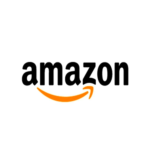
Amazon marketing strategy relies on the following four pillars: 1. Offering the widest range of products. The largest internet retailer in the world by revenue offers hundreds of millions of products. The wide range of product it offers has earned the online retailer the moniker The Everything Store. 2. Using customer-friendly interface. The tech giant has an advanced interface that integrates personalized recommendations and recent browsing history, among others. Ever-improving user interface is the result of the company’s focus to become Earth’s most customer-centric company. 3. Scaling easily from small to large. The e-commerce and cloud computing company has experience and competence in scaling from small to large. This factor plays in instrumental role exploring new business segments. Scaling from small to large has allowed the online retail behemoth do disrupt increasing ranges of industries such as retail, transportation, entertainment and now industrial distribution. 4. Exploiting affiliate products and resources. Up to date, the tech giant has taken a full advantage of affiliate programs, products and resources to contribute to the bottom line of the business. Amazon marketing strategy integrates a number of targeted online marketing channels, such as Associates program, sponsored search, social and online advertising, television advertising, and other initiatives. Generally, Amazon marketing strategy is based on the following principles: Amazon 7ps of marketing mainly focuses on product and place elements of the marketing mix. Offering hundreds of millions of products in the USA alone, Amazon product range is the widest among online and offline retailers. Moreover, the company is able to offer its products for competitive prices due to massive cost savings based on online nature of business operations. Amazon segmentation targeting and positioning practices are associated with targeting the widest customer segment. The retail giant does this with the application of multi-segment, adaptive, anticipatory and stop-gap…
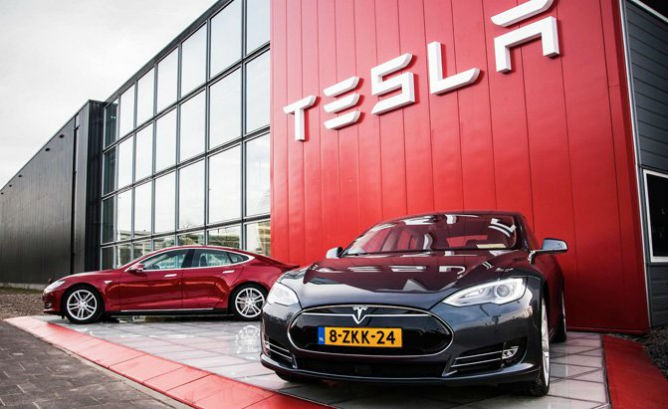
Tesla marketing strategy has been dubbed as USD0 (zero dollar) marketing strategy[1] largely for its avoidance of paid advertising. Instead, the electric automaker focuses on social media marketing. CEO Elon Musk boasted that “Tesla shells out virtually nothing on advertising and endorsements, and relies heavily on word of mouth.”[2] Tesla 7ps of marketing focuses on product and place elements of the marketing mix to a greater extent compared to other elements. Moreover, product and place elements of the marketing mix have been adapted as main sources of Tesla competitive advantages. Specifically, Tesla produces fully electric cars that are fast and attractively designed. Moreover, the electric automaker does not deal with car dealerships and distributors and sells its vehicles directly to end-users. Tesla target market segment represent individuals and households who are not indifferent towards environmental issues and negative environmental implications of CO2 emissions. Tesla effectively appeals to the emotional needs of the target customer segment to feel themselves as environmentally responsible via purchasing electric cars and using solar panels. Tesla marketing strategy is based on the following principles: 1. Marketing through customer experience. Telsa referral program effectively enhances customer experience by offering USD 1000,00 credit and additional accessories and perks. These include Solar Roof, 21” Arachnid Wheels for Model S or 22” Turbine Wheels for Model X and VIP invitation for Tesla Unveiling events, among others.[3] 2. Effective use of social media. CEO Elon Musk has evolved as the face of Tesla and his direct engagement with customers via social media attracts media attention with generally positive implications for the brand. Musk uses his social media accounts as efficient tools for Tesla marketing strategy. 3. Cross-promotional opportunities. Tesla CEO Elon Musk also owns and runs other businesses, namely, SpaceX and Solar City. These companies benefit from unique cross-promotional opportunities. For example, Space X launched…
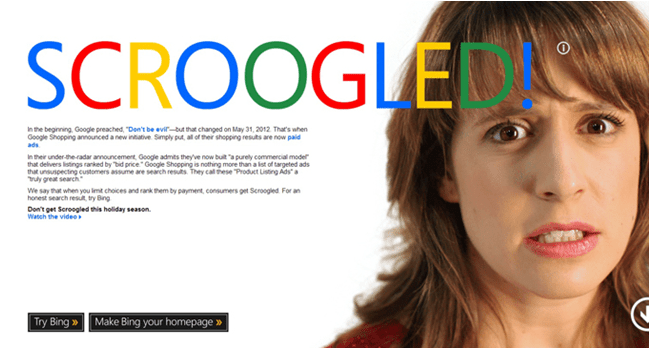
Since the appointment of Satya Nadella as CEO, Microsoft marketing strategy has changed to become less ‘hostile’ abandoning kinds of advertising that ‘attacked’ competitors in a direct manner. For example, a marketing campaign known as ‘Scroogled!’ launched in 2012 informed about Google’s decision to display paid advertisements to search results related to shopping. ‘Scroogled’ was launched to ensure the shift of some Google users to use Microsoft’s Bing search engine, but Nadella stopped this and some other similar campaigns as an attempt to improve the image of the company.[1] ‘Scroogled’ marketing campaign as illustration of old-style Microsoft marketing strategy In other words, since his appointment on the top job, Satya Nadella has been focusing on humanising the brand and taking a customer-centric approach with direct implications on the marketing strategy of Microsoft. Microsoft sales and marketing expenses amounted to USD 17,469 billion, USD 15,461 billion and USD 14,635 billion for the fiscal years of 2018, 2017 and 2016 respectively . In 2018 the tech giant’s sales and marketing expenses increased USD2.0 billion or 13% compared to the previous year.[2] Microsoft marketing strategy is based on the following principles: 1. Investing in the communication of marketing message through various marketing communication channels in an integrated manner. The technology giant uses a range of marketing communication channels such as advertising, sales promotion, events and experiences, public relations, direct marketing and personal selling in an integrated way to communicate its marketing message to its target customer segment. 2. Focus on product element of the marketing mix. Microsoft 7Ps of marketing focuses on the product element of the marketing mix to a greater extent compared to other elements. Accordingly, the multinational technology company has accepted high level of user convenience of its products and services as unique selling proposition associated with the brand. 3.…

Samsung’s has the largest marketing budget in the competition and this fact partially explains the leadership position of the business in terms of market share. Samsung spent a total of USD10.2 billion (11.5 trillion won) on marketing in 2016 alone. This included USD3.9 billion (4.4 trillion won) toward advertisements, a 15% increase from 2015[1]. Samsung marketing strategy integrates various forms of advertising, events and experiences, public relations, direct marketing and personal selling as discussed further below in more details. The multinational electronics company has 53 global sales bases worldwide. Samsung marketing strategy is based on the following principles: Samsung 7ps of marketing places greater emphasis on product element of the marketing mix, compared to other elements such as process, people and physical evidence. Specifically, with 34 R&D centres worldwide and 53 global production bases, the multinational electronics company attempts to ensure the continuous pipeline of new products with innovative features and capabilities. Samsung segmentation targeting and positioning strategy integrates multi-segment, imitative and anticipatory positioning techniques. Samsung marketing communications strategy, as it is illustrated in figure below, comprises two steps and each step involves a set of separate activities. It has to be noted that legal review as an important element of marketing communication process is present in both steps – production and execution. This is because neglecting legal implications associated with the development and delivery of marketing communication messages can cause considerable damage to the brand image with severe financial implications. Samsung Electronics marketing communication process[2 Samsung Group Report contains a full analysis of Samsung marketing strategy. The report illustrates the application of the major analytical strategic frameworks in business studies such as SWOT, PESTEL, Porter’s Five Forces, Value Chain analysis and McKinsey 7S Model on Samsung. Moreover, the report contains analyses of Samsung leadership, organizational structure and…
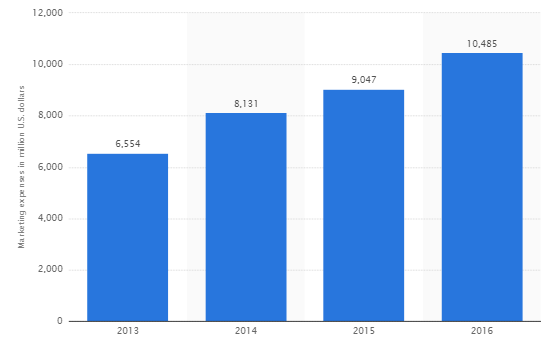
Alphabet (Google) marketing strategy integrates various online and offline marketing techniques. Alphabet’s marketing budgets and efforts mainly focus on main business – Google. It has been noted that “though you’ll never see an ad for the king of the search engines, this query behemoth employs some of the most subtle, yet fantastically impressive marketing strategies out there”[1] Beyond Google, Alphabet Inc. does not invest much resources and efforts to advertise its other projects such as Access, Calico, CapitalG, GV, Nest, Verily, Waymo, and X. This is because most of these projects are only on the stage of research and development and they do not have products and services ready to offer to the market. As it is illustrated in Figure 4 below, total annual marketing spending of the company has been consistently increasing during the past several years. Out of these amounts, for the years ended December 31, 2014, 2015 and 2016, advertising and promotional expenses totalled approximately USD3,004 million, USD3,186 million, and USD3,868 million, respectively[2]. Annual Alphabet Inc. (Google) marketing spending[3] Google marketing strategy is based on the following principles: Within the framework of marketing mix, focusing on product element to a greater extent compared to other elements. The majority of Alphabet products and services are innovative in their nature or they add innovative features to existing products and services. Targeting the broadest customer segment with multiple products and services. The company’s core business, Google offers a wide range of products and services such as Search, Android, Maps, Chrome, YouTube, Google Play, and Gmail that are used by billions of people every day worldwide. Using several elements of marketing communications mix in an integrated manner. Specifically, the internet giant uses sales promotion, events and experiences, public relations and direct marketing tools to company to communicate its marketing message to…

Executive summary This is an innovative marketing plan devised for a new business that involves selling herbal teas online. The business involves importing three ranges of herbal tea – Rugose Rose flower tea, Carnatation flower tea, and Jasmine Bud flower tea would be from China to UK and selling over the website healthy-herbal.co.uk. The main competitive advantages associated with the business proposal include innovative marketing plan, competitive prices and high quality of products. A comprehensive situation analysis conducted on the basis of formulating key assumptions and conducting SWOT analysis has preceded the choice of marketing tools and techniques in order to well healthy-herbal.co.uk herbal teas. Marketing strategy formulated for healthy-herbal.co.uk consist of specific marketing techniques belonging to advertising, sales promotion, and direct marketing communication mix components. Moreover, the innovative marketing plan relies on viral marketing techniques due to their high level of cost effectiveness and speed. Namely, viral marketing techniques to be used by healthy-herbal.co.uk include e-mail marketing, Facebook marketing and marketing through YouTube. The marketing plan focuses on integration of all individual programs and initiatives in order to communicate the brand value proposal of healthy-herbal.co.uk which is associated with adopting a proactive approach in leading healthy lifestyle. The plan also contains provisions for the measurement of results. 1. Introduction This is an innovative marketing plan for a new online business that would be selling a range of herbal teas – Rugose Rose flower tea, Carnatation flower tea, and Jasmine Bud flower tea over a website, healthy-herbal.co.uk. Focusing on integrated marketing communications, the marketing plan addresses each component of marketing communication mix an individual manner. The range of herbal teas offered by healthy-herbal.co.uk – Rugose Rose flower tea, Carnatation flower tea, and Jasmine Bud flower tea and others have significant health benefits and they are also very delicious, and…
